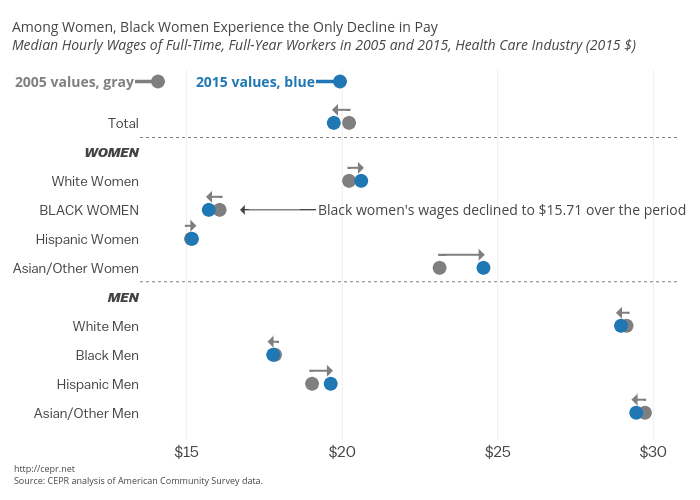July 31, 2017
The healthcare sector is one of the most important sources of jobs in the economy. It accounts for nearly 18 percent of GDP and almost 14 percent of private sector jobs. It is the only sector that consistently added jobs during the Great Recession.
Overall industry employment grew by 20 percent between 2005 and 2015 and in 2016 it added 381,000 jobs, more than any other industry. Despite strong employment growth, however, median real wages of full-time, full-year healthcare workers declined 2.4 percent between 2005 and 2015 – falling 49 cents an hour from $20.22 to $19.73. This decline in real wages was led by the decline in pay for black women.
Over the decade from 2005 to 2015, the median real wage paid to black women working in health care full-time, full-year fell by 35 cents, from $16.06 an hour to $15.71 an hour. During this same period, black women overall continued to increase their educational attainment, and employment among black women in health care grew by 22 percent. This is the only group of women to experience a decline in their median real wage. The hourly pay of white women rose 39 cents over the decade. As a result, black women went from earning 79 cents for every dollar earned by a white woman to earning just 76 cents. Black women’s earnings as a share of overall earning in healthcare held steady 2005-2015 at about 79.5 percent as the median real wage for all workers also declined.







